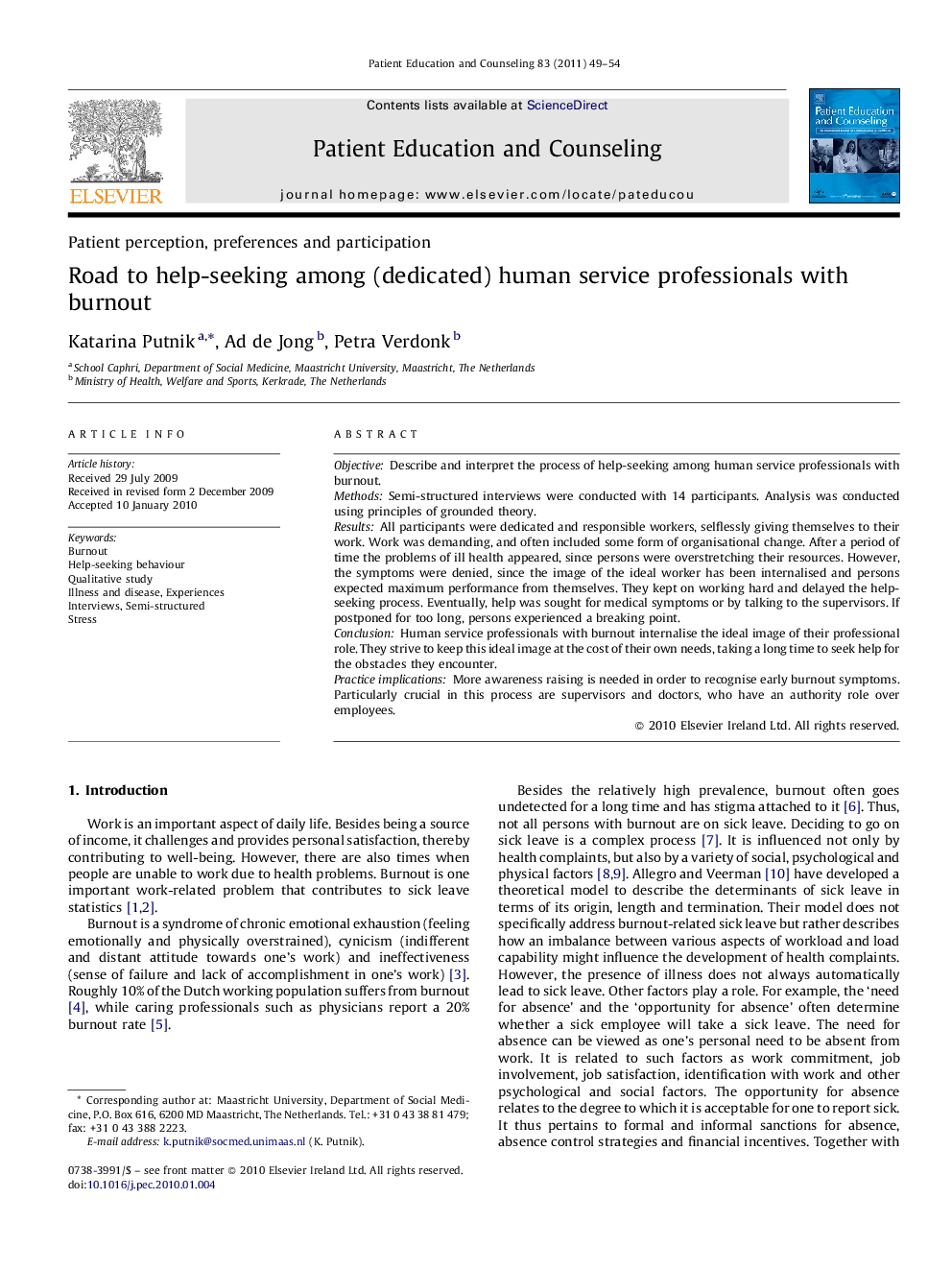| Article ID | Journal | Published Year | Pages | File Type |
|---|---|---|---|---|
| 3814870 | Patient Education and Counseling | 2011 | 6 Pages |
ObjectiveDescribe and interpret the process of help-seeking among human service professionals with burnout.MethodsSemi-structured interviews were conducted with 14 participants. Analysis was conducted using principles of grounded theory.ResultsAll participants were dedicated and responsible workers, selflessly giving themselves to their work. Work was demanding, and often included some form of organisational change. After a period of time the problems of ill health appeared, since persons were overstretching their resources. However, the symptoms were denied, since the image of the ideal worker has been internalised and persons expected maximum performance from themselves. They kept on working hard and delayed the help-seeking process. Eventually, help was sought for medical symptoms or by talking to the supervisors. If postponed for too long, persons experienced a breaking point.ConclusionHuman service professionals with burnout internalise the ideal image of their professional role. They strive to keep this ideal image at the cost of their own needs, taking a long time to seek help for the obstacles they encounter.Practice implicationsMore awareness raising is needed in order to recognise early burnout symptoms. Particularly crucial in this process are supervisors and doctors, who have an authority role over employees.
